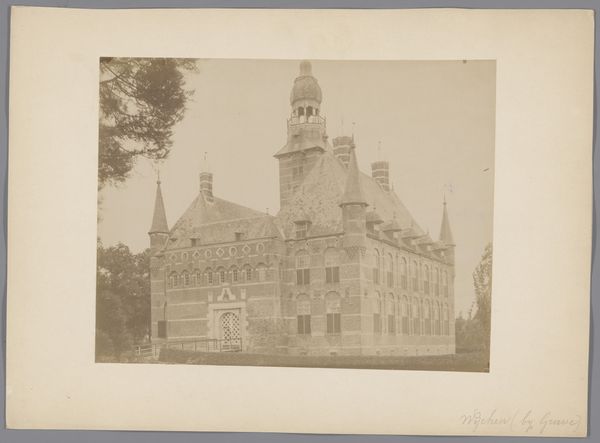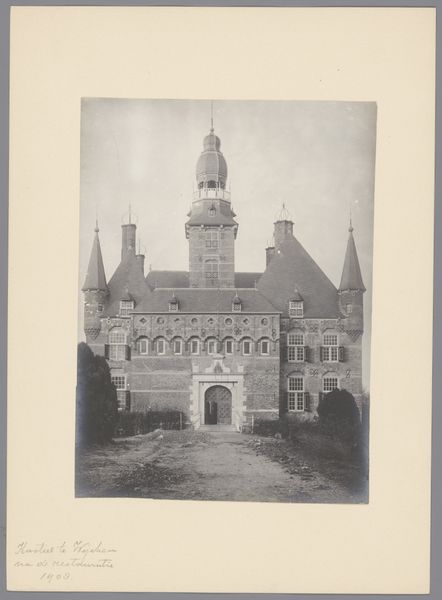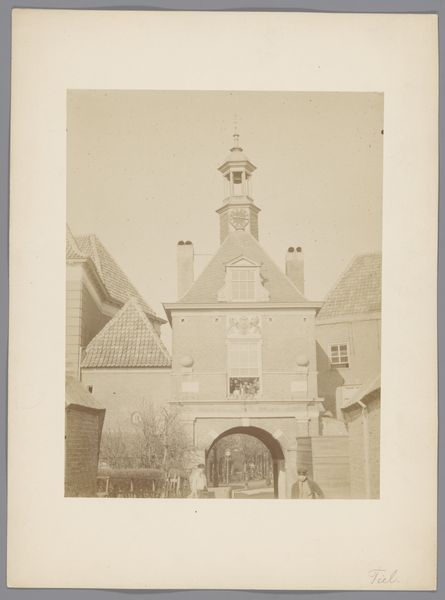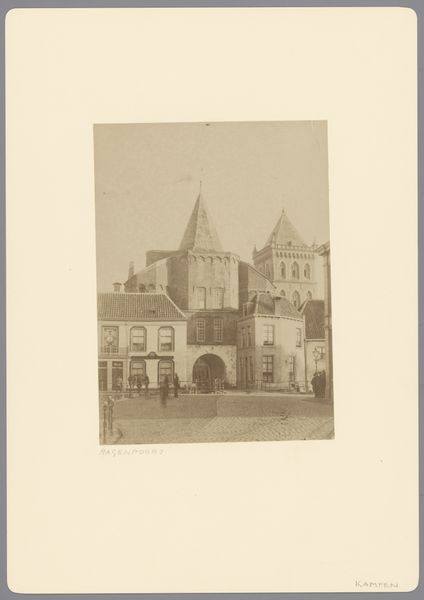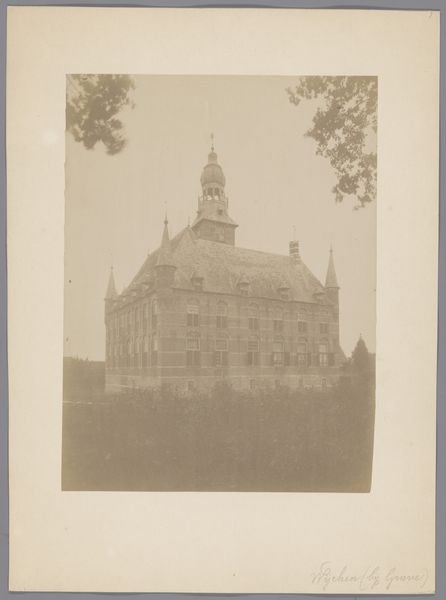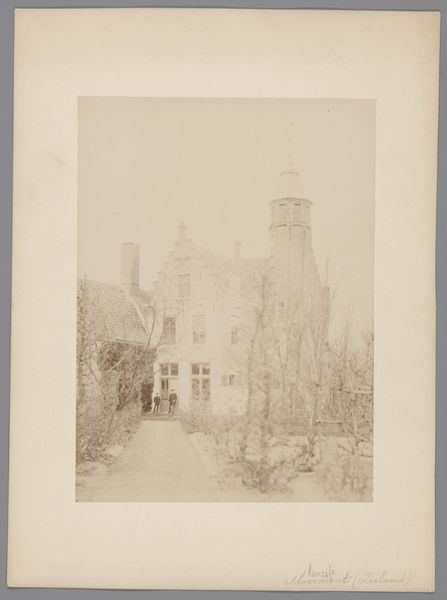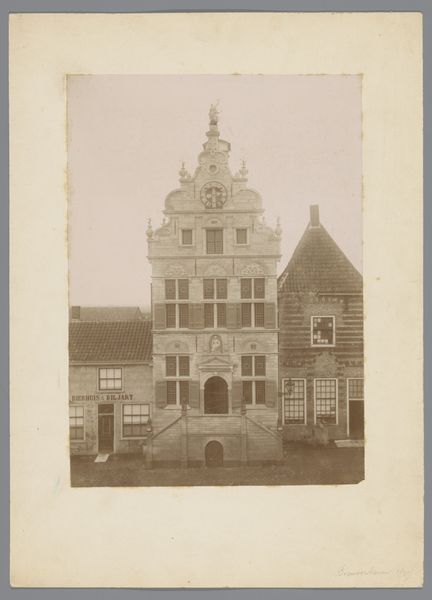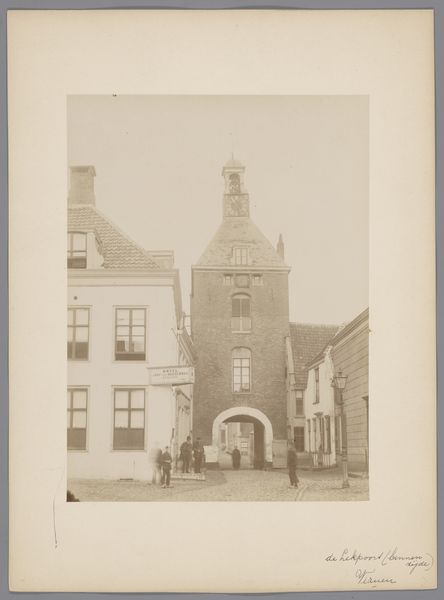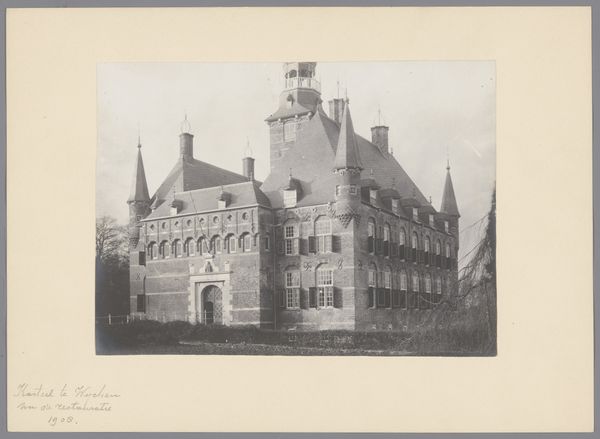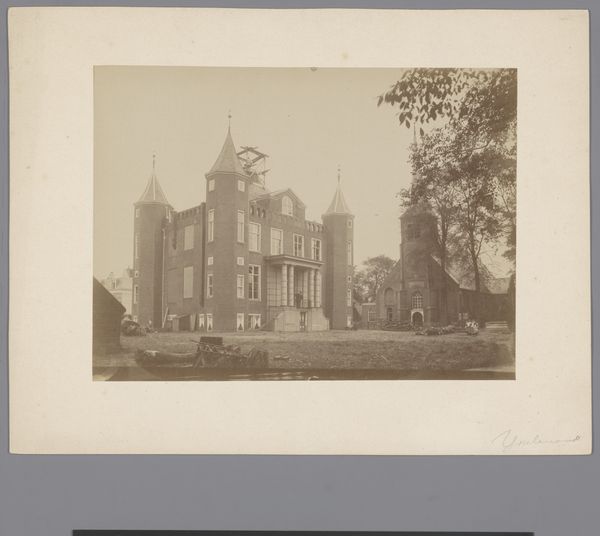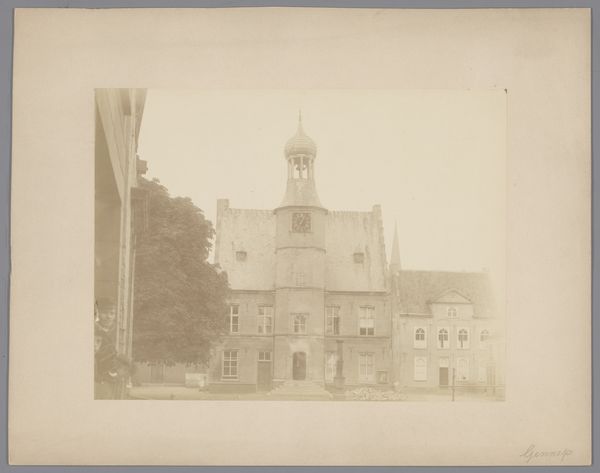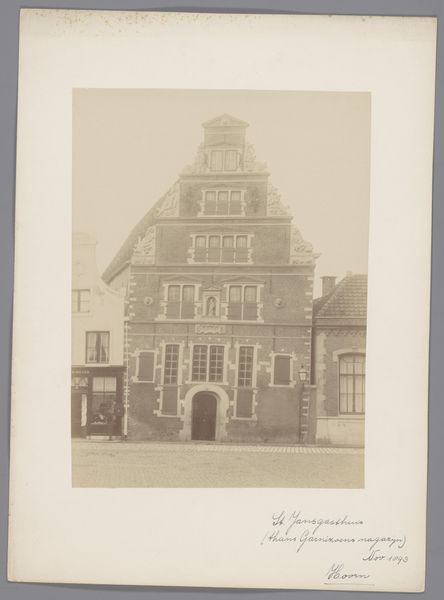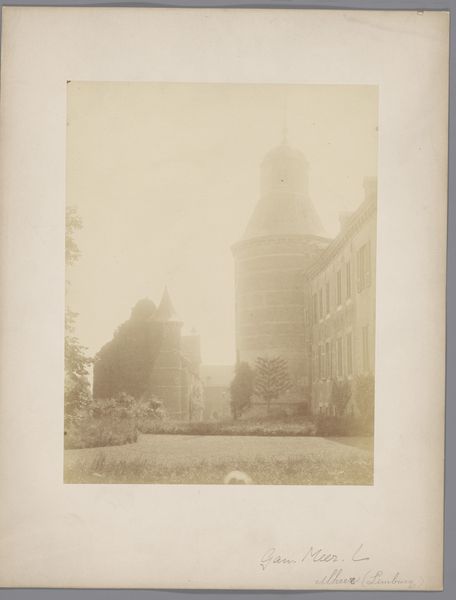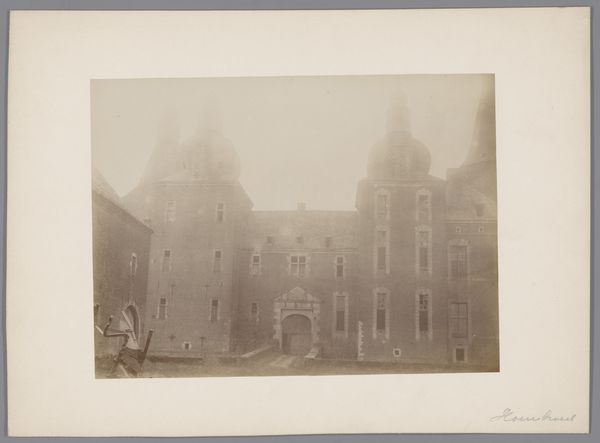
Dimensions: height 240 mm, width 170 mm
Copyright: Rijks Museum: Open Domain
Editor: So, this photograph is titled "Kasteel van Wijchen," taken before 1906, by an anonymous photographer. It has a ghostly, sepia tone. The detail in the brickwork and tower is really impressive, it gives the building a tangible presence, like you could almost reach out and touch the stone. How do you read this work, looking at it today? Curator: This photograph draws my attention to the social and material conditions of its making and consumption. Think about it: what was required to produce an image like this at the turn of the century? The labor involved in quarrying the stone for the castle itself, certainly. But also the complex chemical processes necessary for photography, the social structures that allowed for its patronage. Do you consider what social classes have access to images like this at this time, and who is outside its scope? Editor: That's a really interesting point – it's easy to forget the sort of chemistry and social infrastructure that goes into something like this! You're right, this would have been pretty exclusive back then, right? Not easily reproduced, or affordable, I assume? Curator: Exactly. And consider what isn’t visible. We see the grand façade of the castle. Where are the servants’ quarters? Where is the surrounding land that supported this lifestyle? These absences are just as telling. This single photograph is not neutral; it participates in a specific economy of seeing. How would seeing those previously unconsidered materials impact one’s reading? Editor: I hadn't thought of it like that, actually seeing how loaded a seemingly simple image of a castle can be. It really changes the way I will view images from this period in the future, understanding that it exists because of production, class and social standing, and labor, and also a specific decision of the author of what it's going to show. Curator: Indeed, seeing art in light of social systems helps unlock an essential facet in the history of its construction.
Comments
No comments
Be the first to comment and join the conversation on the ultimate creative platform.
